The Volkswagen Beetle is an iconic car that has captured hearts for decades with its quirky design and timeless charm. But what happens when this classic vehicle retires from the road? Enter the Volkswagen Beetle planter—a creative, eco-friendly way to repurpose the beloved car into a stunning garden centerpiece. Whether you’re a car enthusiast, a gardening lover, or someone who adores unique décor, a Volkswagen Beetle planter can elevate your outdoor space like nothing else.
In this guide, we’ll explore everything you need to know about the Volkswagen Beetle planter: its history, how to make one, design ideas, and why it’s become a trending choice for garden enthusiasts. Let’s dive in and discover how this quirky creation can bring personality to your backyard.
What Is a Volkswagen Beetle Planter?
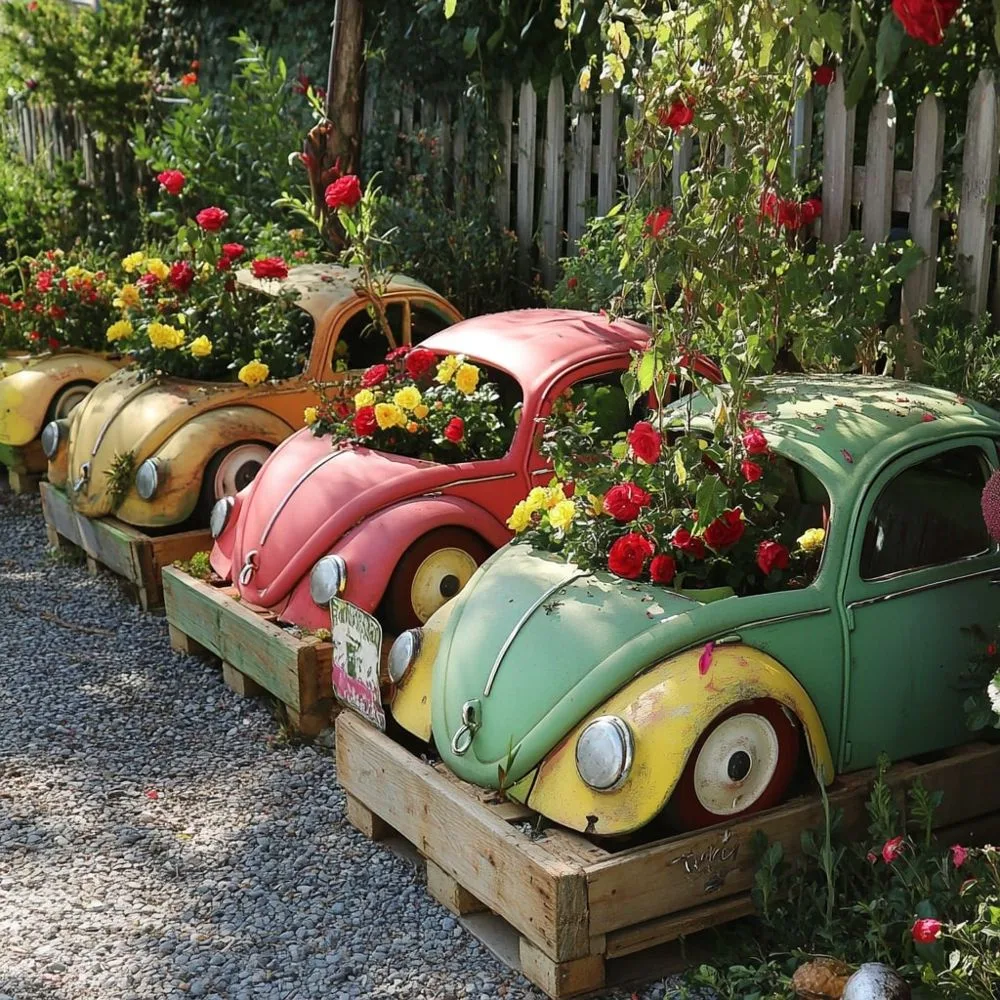
A Volkswagen Beetle planter is exactly what it sounds like—an old Volkswagen Beetle transformed into a functional planter for flowers, herbs, or succulents. Instead of letting these vintage cars rust away in junkyards, creative minds have found a way to give them new life as garden art. The car’s body—often the hood, roof, or trunk—is filled with soil and plants, turning it into a conversation starter and a sustainable décor piece.
The idea blends automotive nostalgia with modern gardening trends, making the Volkswagen Beetle planter a perfect fit for anyone looking to add a touch of whimsy to their landscape.
The Origins of the Volkswagen Beetle Planter Trend
The Volkswagen Beetle, first introduced in the late 1930s, became a symbol of affordability and individuality. Fast forward to today, and its rounded shape and retro vibe make it an ideal candidate for upcycling projects. The planter trend likely started with DIY enthusiasts and artists who saw potential in the car’s unique structure. Over time, social media platforms like Pinterest and Instagram amplified its popularity, showcasing vibrant Beetles overflowing with blooms.
Now, the Volkswagen Beetle planter is a sought-after item for homeowners and businesses alike, merging vintage charm with green living.
Why Choose a Volkswagen Beetle Planter for Your Garden?
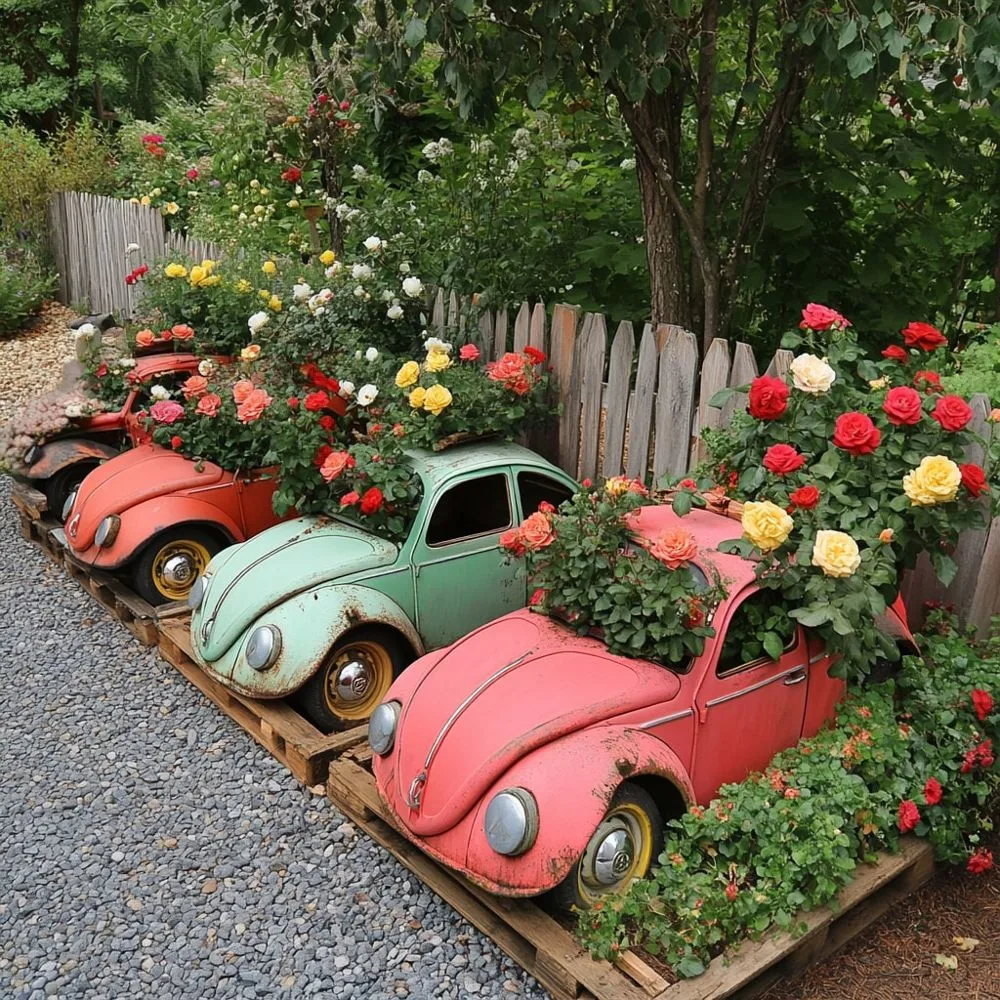
If you’re wondering why a Volkswagen Beetle planter deserves a spot in your yard, the reasons are plenty. Let’s break it down.
Unique Aesthetic Appeal
No two Volkswagen Beetle planters are exactly alike. Whether painted in bold colors, left with a weathered patina, or adorned with climbing vines, each one tells a story. It’s not just a planter—it’s a piece of art that reflects your personality.
Eco-Friendly Upcycling
Repurposing an old car into a Volkswagen Beetle planter is a fantastic way to reduce waste. Instead of sending a vehicle to the scrap heap, you’re giving it a second life while supporting sustainable gardening practices.
Versatility in Design
From small succulents in the headlights to a full flowerbed in the trunk, the Volkswagen Beetle planter adapts to any gardening style. It’s versatile enough for urban patios or sprawling rural landscapes.
How to Create Your Own Volkswagen Beetle Planter
Ready to roll up your sleeves and craft your own Volkswagen Beetle planter? Here’s a step-by-step guide to get you started.
Step 1: Source a Volkswagen Beetle
The first challenge is finding a Beetle. Look for non-functional models at junkyards, online marketplaces like eBay, or local car enthusiast groups. You don’t need a working engine—just the shell will do. Prices can vary, but a rusted-out Beetle might cost anywhere from $500 to $2,000, depending on condition and location.
Step 2: Prepare the Car
Once you’ve got your Beetle, it’s time to prep it. Remove the engine, seats, and any hazardous materials (like oil or gas). Clean the body thoroughly and decide which parts will hold plants—common choices include the hood, trunk, or even the interior.
Safety Tip
Wear gloves and protective gear when handling rusty metal or sharp edges. If you’re not comfortable with car disassembly, consult a mechanic or scrapyard professional.
Step 3: Add Drainage
For a healthy Volkswagen Beetle planter, drainage is key. Drill holes in the bottom of the areas where plants will grow. Add a layer of gravel or small rocks before filling with soil to prevent waterlogging.
Step 4: Fill with Soil and Plants
Choose a high-quality potting mix suited to your plants. Popular choices for a Volkswagen Beetle planter include:
- Flowers: Petunias, marigolds, or pansies for vibrant color.
- Herbs: Basil, thyme, or rosemary for a functional touch.
- Succulents: Low-maintenance options that thrive in shallow soil.
Arrange your plants creatively—let vines spill over the sides or fill the headlights with small pots.
Step 5: Customize the Look
Paint your Beetle in a fun color (think bright yellow or pastel pink), or leave it weathered for a rustic vibe. Add decals, fairy lights, or even a faux license plate with a witty gardening pun like “PLNTBUG.”
Creative Design Ideas for Your Volkswagen Beetle Planter
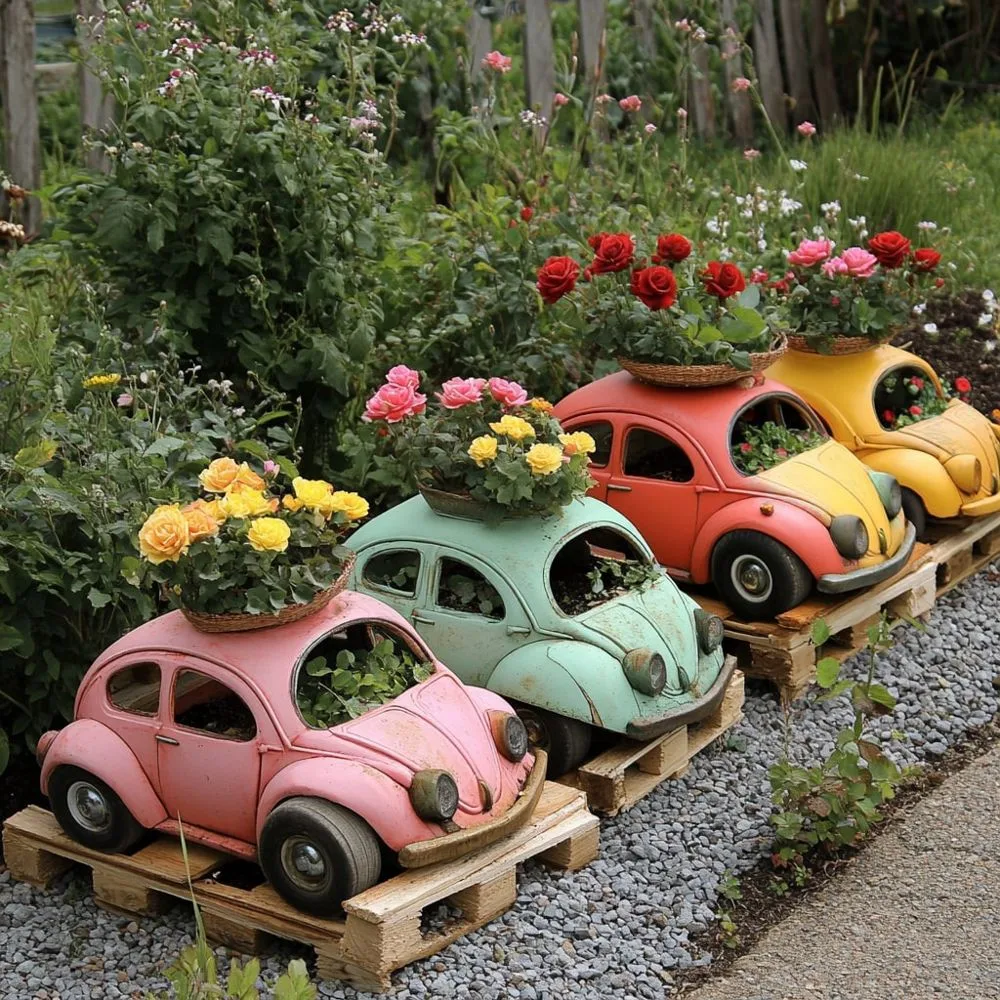
Stuck on how to style your Volkswagen Beetle planter? Here are some inspiring ideas to spark your creativity.
The Flower Power Beetle
Channel the Beetle’s 1960s hippie roots with a psychedelic paint job and overflowing wildflowers. Think daisies, sunflowers, and lavender cascading from every crevice.
Pro Tip
Use contrasting colors—like yellow flowers against a blue car—to make the blooms pop.
The Minimalist Succulent Bug
For a modern twist, fill your Volkswagen Beetle planter with sleek succulents and cacti. A matte black or white paint job keeps it chic and contemporary.
The Herb Garden on Wheels
Turn your Beetle into a mobile kitchen garden by planting herbs in the trunk and hood. Bonus points if you park it near your outdoor cooking area!
The Fairy Tale Beetle
Create a whimsical scene with moss, tiny figurines, and delicate flowers like baby’s breath. This Volkswagen Beetle planter could double as a magical kids’ play area.
Where to Place Your Volkswagen Beetle Planter
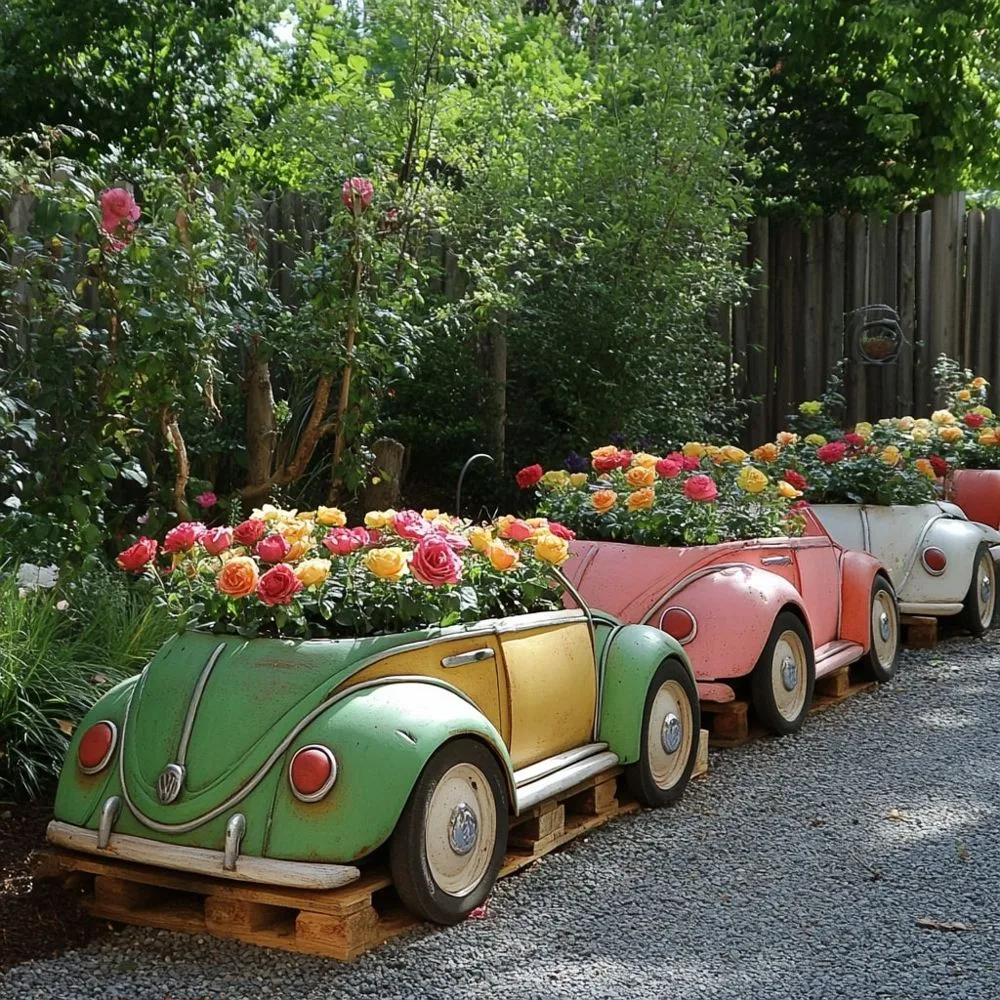
Placement is everything when it comes to showcasing your Volkswagen Beetle planter. Here are some top spots:
Backyard Focal Point
Park it in the center of your yard as a bold statement piece. Surround it with gravel or stepping stones for a polished look.
Front Porch Greeter
If you’ve got a smaller Beetle (or just the front half), place it near your entrance to welcome guests with charm.
Patio Companion
Tuck your Volkswagen Beetle planter into a corner of your patio for a quirky accent that ties the space together.
Sunlight Consideration
Ensure your chosen spot gets the right amount of sunlight for your plants—full sun for flowers, partial shade for herbs or succulents.
Caring for Your Volkswagen Beetle Planter

Like any garden feature, a Volkswagen Beetle planter requires maintenance to stay in top shape.
Watering and Feeding
Check soil moisture regularly and water according to your plants’ needs. Add fertilizer during the growing season to keep them thriving.
Rust Prevention
If you want to preserve the car’s look, apply a rust-resistant sealant. Alternatively, embrace the patina as part of its charm.
Seasonal Adjustments
In winter, protect tender plants with covers or move potted sections indoors. Swap out annuals for seasonal blooms to keep your Volkswagen Beetle planter fresh year-round.
The Cost of a Volkswagen Beetle Planter Project
Budgeting for a Volkswagen Beetle planter depends on your approach. A DIY project might cost $500–$1,500, including the car, soil, plants, and paint. Pre-made versions from artisans can range from $2,000 to $5,000, depending on customization.
For a budget-friendly option, start small—use just the hood or a section of the car instead of the whole vehicle.
Why the Volkswagen Beetle Planter Is Here to Stay
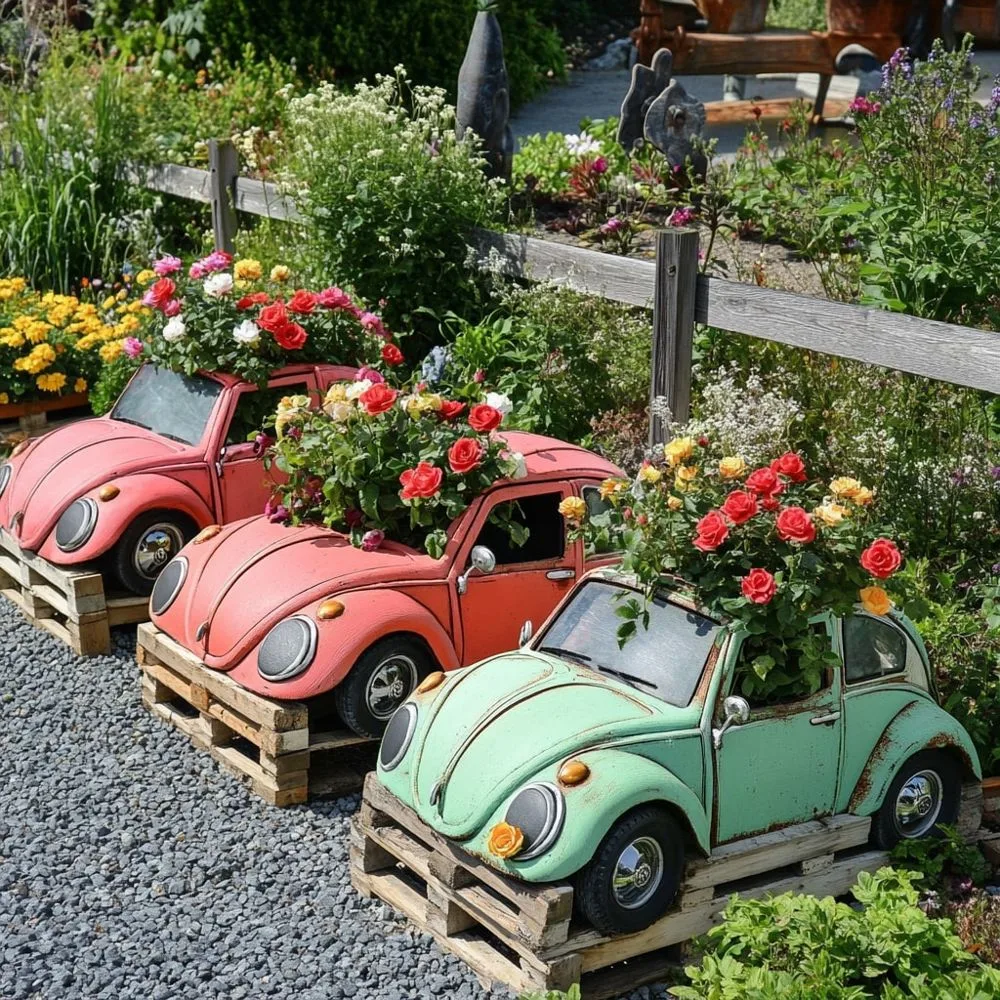
The Volkswagen Beetle planter isn’t just a passing fad—it’s a testament to creativity, sustainability, and nostalgia. As more people seek unique ways to personalize their spaces, this quirky garden feature checks all the boxes. It’s a blend of history and horticulture that resonates with eco-conscious homeowners and vintage lovers alike.
Plus, with endless customization options, the Volkswagen Beetle planter evolves with every new owner, ensuring its place in gardens for years to come.
The History Behind the Volkswagen Beetle’s Appeal
To fully appreciate the Volkswagen Beetle planter, it’s worth taking a quick detour into the car’s storied past. Understanding its legacy adds another layer of meaning to your garden project.
From People’s Car to Cultural Icon
The Volkswagen Beetle was born in Germany in the late 1930s as the “People’s Car” (Volkswagen translates to this in German), designed by Ferdinand Porsche under Adolf Hitler’s directive to create an affordable vehicle for the masses. Its simple mechanics and distinctive rounded shape made it a hit, but it wasn’t until the post-war era that the Beetle truly took off globally.
By the 1960s, it became a symbol of counterculture, adorning bumper stickers with peace signs and flower decals. This rich history of individuality and resilience makes the Volkswagen Beetle planter more than just a quirky idea—it’s a tribute to a car that’s weathered time and trends.
Why It’s Perfect for Planters
The Beetle’s compact size, curved lines, and hollowed-out compartments (like the hood and trunk) make it an ideal vessel for plants. Unlike larger vehicles, it’s manageable for most DIYers, and its nostalgic vibe pairs beautifully with the organic chaos of a garden.
Advanced Tips for Building a Volkswagen Beetle Planter
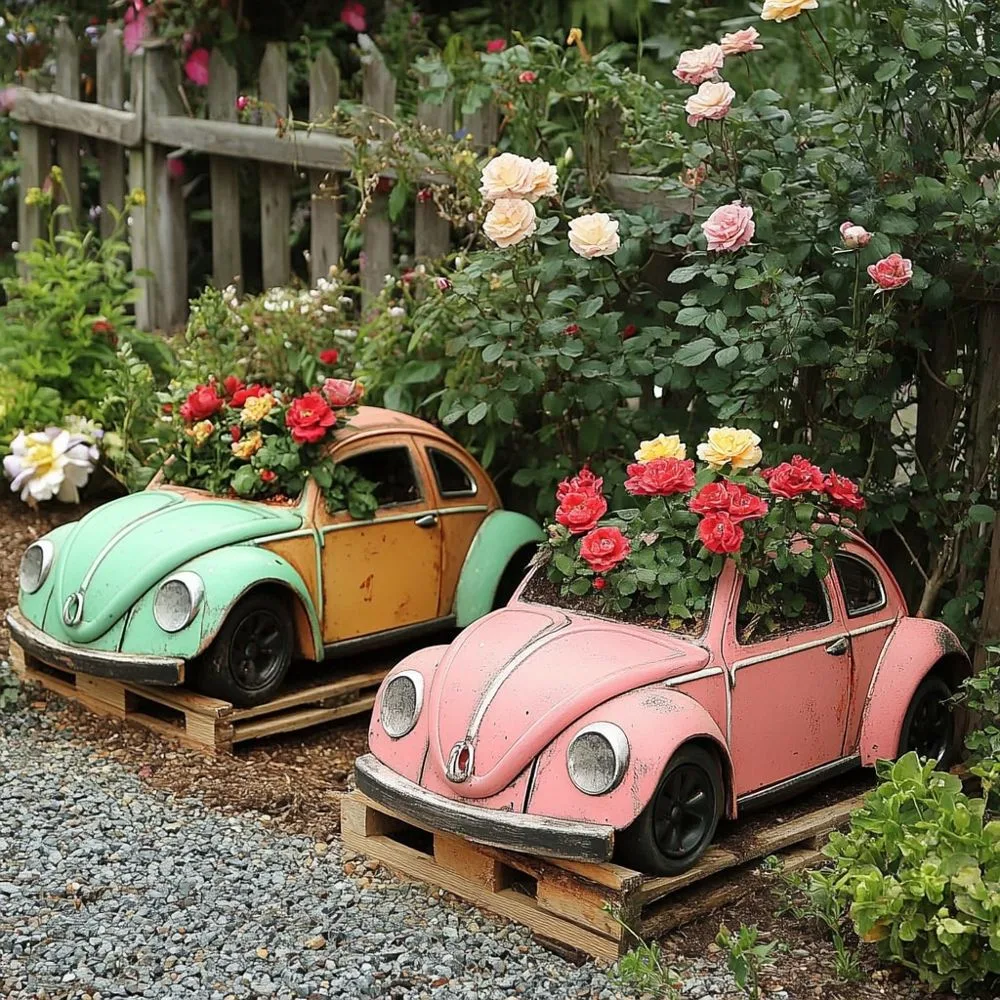
If you’re ready to take your Volkswagen Beetle planter to the next level, these advanced tips will help you refine your project.
Reinforcing the Structure
Old Beetles can be fragile, especially if rusted. Before adding soil, reinforce weak spots with metal braces or fiberglass patches. This ensures your Volkswagen Beetle planter can handle the weight of wet soil and plants without collapsing.
Tools You’ll Need
- Drill and metal bits
- Rust-resistant screws
- Metal sheeting or fiberglass kit
Adding a Irrigation System
For low-maintenance care, install a simple drip irrigation system inside your Volkswagen Beetle planter. Run tubing through the car’s frame to deliver water directly to the roots—perfect for busy gardeners or hot climates.
Incorporating Lighting
Elevate your Volkswagen Beetle planter’s nighttime appeal with solar-powered lights. Place them in the headlights, along the edges, or within the plant beds for a glowing effect that highlights both the car and its greenery.
Drive Your Garden to New Heights with a Volkswagen Beetle Planter
If you’re ready to make a bold statement in your outdoor space, a Volkswagen Beetle planter is the perfect project. It’s more than just a planter—it’s a celebration of ingenuity, a nod to automotive history, and a sustainable way to beautify your home. Whether you’re planting flowers, herbs, or succulents, this iconic car-turned-garden-feature will turn heads and spark smiles.
So, why not hunt down a Beetle, grab some soil, and start creating? Your dream Volkswagen Beetle planter is just a weekend project away. Let your garden bloom with personality and watch as this vintage gem takes root in your life.

